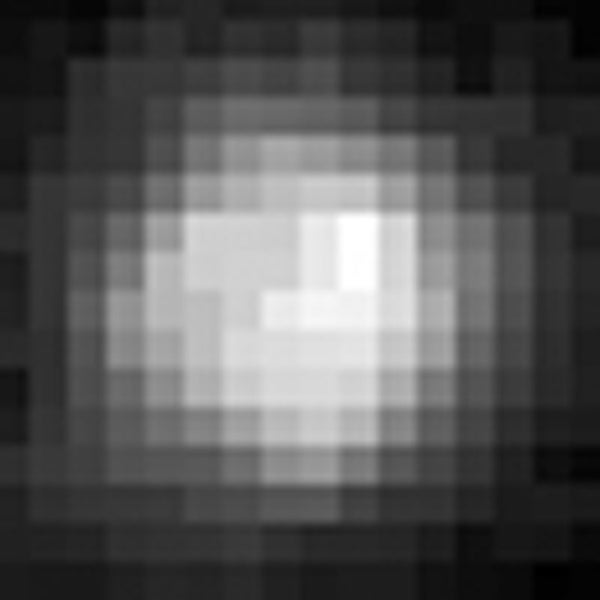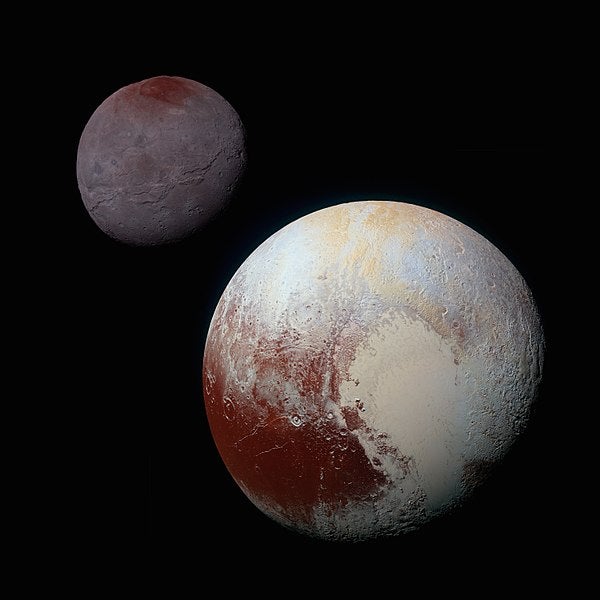This article was published in Scientific American’s former blog network and reflects the views of the author, not necessarily those of Scientific American
For the past 17 years, it’s been my privilege to lead NASA’s New Horizons space mission and its exploration of Pluto—the farthest planet ever explored. During that time, I was often asked to predict what we would find there, but I knew better, because I’d seen too many such predictions about what would be found by previous first-time explorations of planets completely fail.
So I just said (perhaps to the disappointment of many journalists) that the only prediction I’d make about the results from the exploration of Pluto is that New Horizons would find “something wonderful.”
Undertaking the exploration of Pluto was something deeply personal for me. Why? In part because, as a planetary scientist, I knew that even in our best telescopes that faraway world remained barely more than a fuzzy blob, and thus we would never unravel Pluto’s many mysteries without going there and seeing it in detail.
On supporting science journalism
If you're enjoying this article, consider supporting our award-winning journalism by subscribing. By purchasing a subscription you are helping to ensure the future of impactful stories about the discoveries and ideas shaping our world today.
The exploration of Pluto was also personal to me because, by the time I finished my PhD in 1989, NASA’s Voyager mission to explore the giant planets of our solar system was wrapping up at Neptune, and all the other planets then known, from Mercury to Neptune, had been explored by spacecraft. So Pluto represented the only remaining opportunity back then to be a part of a first mission of exploration to a new planet.

The best image of Pluto ever made before New Horizons, by the Hubble Space Telescope. Credit: NASA Hubble Space Telescope
A final part of what made the exploration of Pluto personal to me was my desire to be a part of something larger than life in my career, a legacy for the ages—and the first-time exploration of a whole new planet was certainly that.
But most of all, it was personal to me because so many people told me it couldn’t be done. Many said NASA would never approve another faraway mission again after Voyager. But once we achieved a ranking by the National Academy of Sciences for the exploration of Pluto as the highest priority for a new mission in the early 2000s, and NASA approved the project, that theory collapsed. Then some said we could never do it on the budget NASA offered: about one fifth of what it had cost to do the Voyager mission; that that was an impossibly small budget to squeeze in to.
But we accomplished that too, thanks to some clever compromises in spacecraft capability and design, and the decision to send only one spacecraft (not two, like Voyager) on the long journey. Then it was said that a single spacecraft mission flying so far (over three billion miles) and needing so long (9.5 years) to reach its target would be too risky and was likely to fail.
But it didn’t fail. In fact, despite a harrowing, near-death experience just days out from arriving at Pluto, New Horizons succeeded in crossing the entire solar system and then exploring Pluto—and did so brilliantly, accomplishing all the objectives set out for it and then some!
In all, the exploration of Pluto took 26 years to accomplish—soup to nuts—from idea to flyby and data return. During that quarter century there were no fewer than five mission studies, then a tough competition between fiercely vying teams to win the project, then millions of hours of effort by the approximately 2,500 Americans who designed, built, tested and flew New Horizons, and ultimately a successful reconnaissance of Pluto and its system of moons that generated an intense public interest that greatly surpassed public interest in every robotic NASA mission before it.
Also along that long road were many battles to keep the mission funded, some adversaries that wanted to see us fail, and more than a few technical problems during spacecraft development. And there was also the sad development of 2006 when a few hundred astronomers—mostly non-experts in the study of planets—declared that Pluto and the then burgeoning list of other small planets that had been discovered beyond Pluto were not planets, largely to prevent schoolchildren from having to memorize their names. (I wonder if those same astronomers—also non-experts in chemistry—believe that there are too many elements in the periodic table for the same reason.)
But in addition to battles and disappointments, there were also soaring moments of unparalleled success during the 26-year-long quest to see Pluto explored. One such was our day of launch, January 19, 2006. Another was the day of our Pluto flyby, on Bastille Day 2015, when New Horizons stormed the gates of Pluto and revealed what had been nothing more than a distant point of light in most telescopes as the truly amazing planet that it is, before our very eyes.

A composite image of Pluto and its giant moon Charon as seen by New Horizons. Credit: NASA, Johns Hopkins University Applied Physics Laboratory and Southwest Research Institute
Few have any idea how much sheer effort it took to undertake this project, how much career risk was involved, how dedicated the team of people were who carried it out were, and how much reward resulted from upending some scientific paradigms of planetary science. But in addition, there was also the reward of how it inspired so many in the public as to what humans can achieve, how it inspired countless schoolkids toward science and engineering careers, and how it showed once again that people still love great expeditions of exploration.
The improbable story of how Pluto came to be explored—including all its good, bad and sometimes even ugly facets—is described now in a just published book called Chasing New Horizons (Picador Press, 2018), which David Grinspoon and I wrote over the past two and a half years.
As we wrote that book about what the New Horizons team accomplished, and how we did it, against many odds, against strong competitors, and even against fate, I became convinced that my long-ago prediction about what we would find at Pluto had been correct: For we truly discovered both in Pluto and in our species—something wonderful.